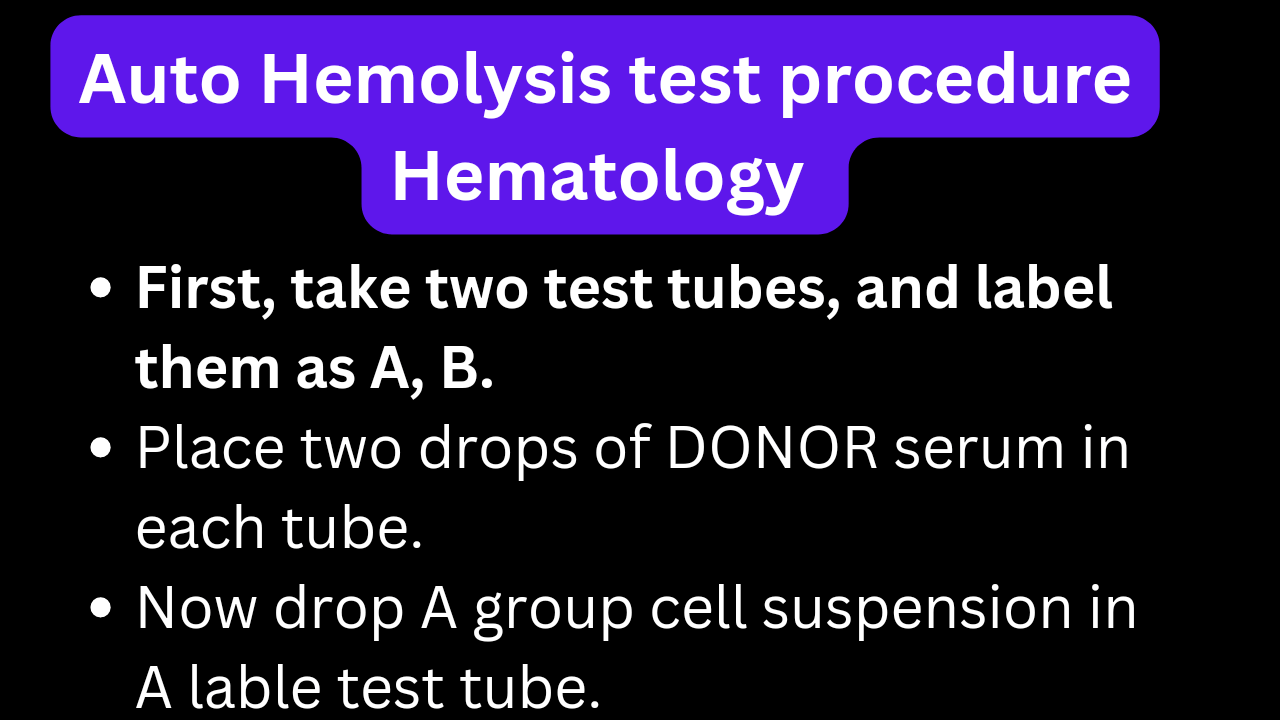The hemolysis test is important in the blood bank when blood group “O” contains anti-A and anti-B antibodies which may be Hemolysin. Therefore hemolysis test procedure is the key test for hemolysis identification.
When such blood group has a high titer of such antibodies are transfused in a person having blood group A, or blood group B or blood group AB. It will cause hemolysis of receiver blood RBC.
Such an “O-positive” group is known as UNIVERSAL DANGEROUS DONOR. This blood must be used only for O-group.
Following steps performed during hemolysis test procedure.
- First, take two test tubes, and label them as A, B.
- Place two drops of DONOR serum in each tube.
- Now drop A group cell suspension in A lable test tube.
- Place B-group cell suspension in B-lable test tube.
- Keep both test tubes at 37 C for 2 hours.
- Centrifuge and examine for hemolysis.
Hemolysis Screening test interpretation
If there is hemolysis in test tube A or B. It means blood is not safe for transfusion. It can ONLY donate to the O-group recipient.
Hemolysis test positive result mean
When there is a Positive hemolysis test result, it means, blood is not safe for that receiver. It will cause hemolysis of receiver RBC.
Note: This O-group can be transfused in O-blood group members only.
What is the purpose of the hemolysis test?
It is an important test for the early identification of UNIVERSAL DANGEROUS DONOR which causes hemolysis of receiver red blood cells.
Which blood group is called as UNIVERSAL DANGEROUS DONOR?
O-blood group is known as UNIVERSAL DANGEROUS DONOR because sometimes it has LYSINE antibody which causes lysis of receiver red blood cells.
